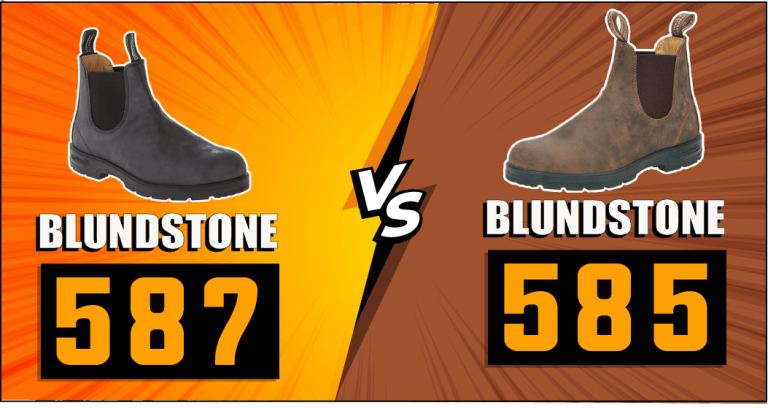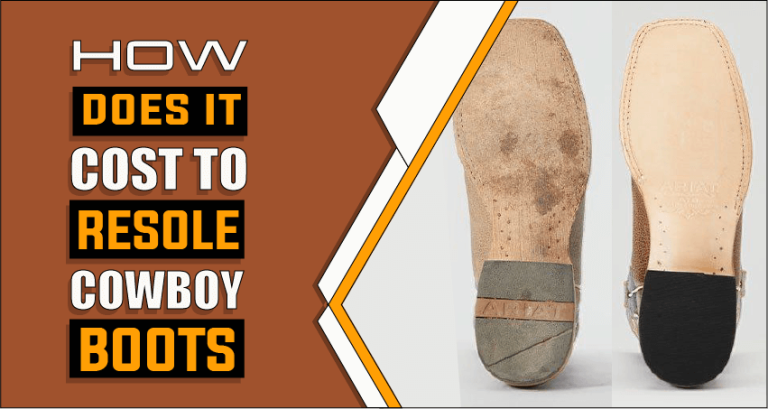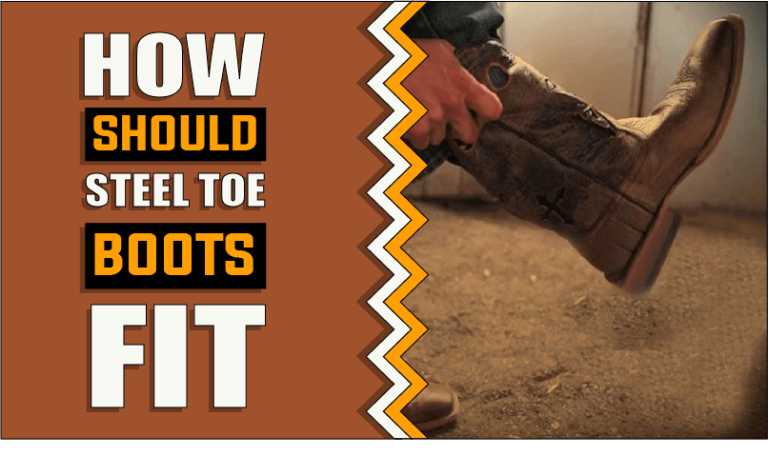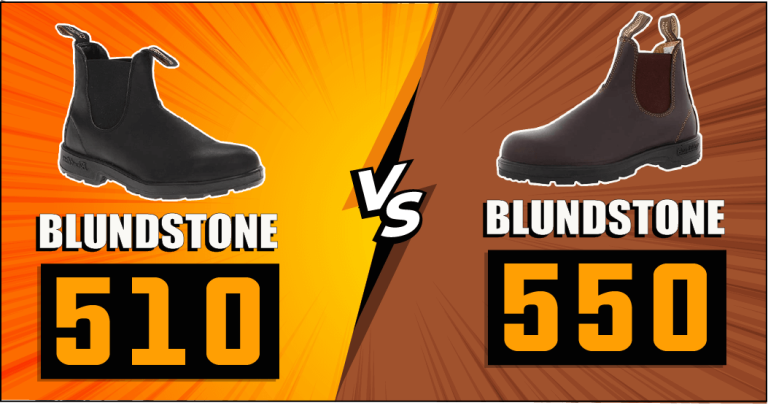How Should Combat Boots Fit – Know Before You Wear
Are you in the market for some good quality combat boots? If so, you’re likely looking for style and durability, but are also probably wondering how they should fit. Picking the right size of combat boot can be tricky – sure, it’s important to ensure there’s enough space that your toes won’t feel squished. But is there such a thing as too much space? How snug should the heel or arch feel when laced up? Is the half-size difference noticeable? We have all these questions – and more! In this blog post, we’ll guide you through how should combat boots fit to make sure that your investment pairs well with both form and function. Let’s discuss what makes a great fitting pair of combat boots together!
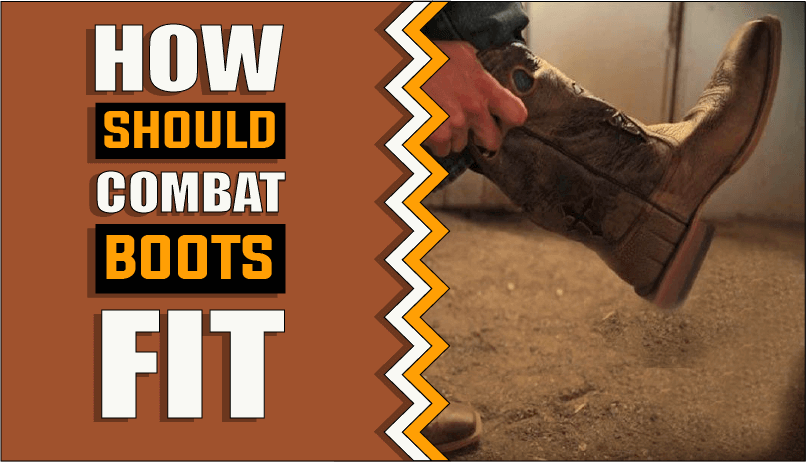
Let’s explore how should combat boots fit.
Combat boots are designed to protect your feet and provide superior traction in a variety of conditions. To get the most out of your combat boots, it’s important to make sure they fit properly when you purchase them. The following tips will help you find the perfect fit for you:
1. Make sure there is enough room for your toes.
Combat boots should fit snugly but not too tightly. Your toes should have enough room to move freely, without feeling cramped. They should also be able to wiggle just a bit.
2. Get the correct size for your foot.
When you’re trying on combat boots, make sure you get the appropriate size for your foot. Combat boots come in half sizes and various widths, so it’s important to find one that fits properly.
3. Choose a style that fits your needs.
There are numerous styles of combat boots available so make sure you select one that meets your needs. Lightweight hiking boots may be ideal for mild terrain, while more rugged-looking ones can provide more stability and protection on tougher terrains.
4. Wear the right socks.
It’s important to wear the right type of socks with your combat boots. Wear moisture-wicking socks that provide cushioning and warmth, as well as a good fit. Tighter socks can restrict blood flow and cause your feet to swell, so make sure you find a comfortable pair.
5. Make sure the laces are snug but not tight.
When you’re tying up your combat boots, be sure to tie them snugly but not too tightly. This will ensure that your foot is secure within the boot and prevent any blisters from forming.
Following these tips will help you find the perfect fit for your combat boots so that you can enjoy maximum performance and comfort in a variety of conditions. Remember to always try on several pairs of boots before purchasing to ensure that they are completely comfortable. With the right pair of combat boots, you’ll be ready to take on whatever comes your way!
How to measure your feet for combat boots?
Measuring your feet for combat boots is a crucial step in guaranteeing a perfect fit. Combat boots should be snug and well-fitted, but not too tight, as this can lead to discomfort during wear. The following steps will help ensure that you obtain the best possible fit when purchasing new combat boots:
1. Prepare –
To accurately measure your feet, you’ll need a pen and paper, as well as a ruler or measuring tape. You will also require something to rest your feet on while measuring.
2. Measure Foot Length –
Place the ruler or measuring tape on the ground and place your foot so that the back of your heel is flush against the start of the ruler. Then, use your pen to mark the end of your toes on the ruler or measuring tape. Measure the distance between these two points in centimeters or inches to get a measurement of your foot length.
3. Measure Foot Width –
To measure the width of your foot, place a piece of paper flat on the ground and stand on it. Press down evenly, making sure that your foot is spread out and not bunched up in one area. Trace the outline of your foot with a pen and measure the length between the widest points to get an accurate measurement of your foot width.
4. Check Measurements –
Compare your measurements with a size chart from the combat boot manufacturer to determine the right size for your feet. If you’re in between sizes, it’s best to opt for the larger size. Once you have obtained a good fit, make sure to try on the boots with socks and other foot coverings that you intend to wear while wearing them. Combat boots should be snug, but there should be enough room in the toe box for your feet to move and breathe.
Following these steps will help ensure that you get a good fit when purchasing combat boots. A properly fitted pair of combat boots can provide comfort and support during wear, so it’s important to take the time to measure your feet accurately. With the right size, your combat boots should provide you with years of reliable comfort and protection.
The different types of fit available for combat boots?
Combat boots are a staple of military and law enforcement personnel as well as outdoor enthusiasts. They provide superior protection and support to your feet while you’re on the go in all types of terrain. There are several different types of fit available for combat boots, each with its own set of advantages and disadvantages that you should consider when choosing the right pair for your needs.
1: Classic “laced” combat boot-
The most popular type of fit available is the classic “laced” combat boot, which features two or more sets of lacing that wrap around the foot and allow you to adjust the fit to your size and shape. This style of boot fits snugly on the feet but still provides enough flexibility for comfortable movement.
2: Slip-on style combat boot-
Another popular style of fit is the slip-on style combat boot, which features a side zipper closure that makes it easy to get on and off quickly. These boots often feature an adjustable strap or buckle at the top for added support, but don’t provide the same level of adjustability as the laced design.
3: “Ankle” combat boot-
The ankle combat boot is designed to provide more support and stability than the other types of fit. These boots usually feature an adjustable buckle at the ankle, which allows you to customize your fit while still providing a secure hold on your foot. They’re ideal for those who need extra ankle support or stability while walking or running on uneven terrain.
4: “High-top” combat boot-
The high-top combat boot is designed to provide the highest level of protection and support available. These boots typically feature a tall shaft that runs up the leg and wraps around the ankle, providing a secure fit that won’t slip or move during strenuous activities.
5: “Gore-Tex” combat boot-
Finally, the Gore-Tex combat boot is designed to provide superior waterproof protection for wet or snowy terrain. These boots feature a breathable, water-resistant membrane that helps keep your feet dry and comfortable while still allowing air to circulate.
No matter which type of fit you choose, it’s important to make sure that you have the right size and fit for your foot. If in doubt, consult with a professional who can help you choose the best combat boot fit for your needs.
How to choose the best combat boots for your needs?
Choosing the best combat boots for your needs can seem like a daunting task, but it doesn’t have to be. Taking the time to research and consider your options will help you make an informed decision when it comes time to buy.
1: Determine Your Intended Use-
Understanding the intended use of your combat boots is the first step in choosing the best pair for you. If you are looking for a pair to wear casually, then look for a softer, more comfortable style with less support and cushioning. On the other hand, if you will be using them for activities like running or other forms of exercise, look for a more supportive and cushioned boot. Additionally, different materials will offer varying levels of durability in different conditions.
2: Consider Your Foot Shape-
Combat boots generally come in standard sizes, but they may not fit your particular foot shape correctly. It is important to take into account the width and length of your foot when selecting a size. Additionally, some boots may be available in wide or extra-wide sizes to accommodate different foot shapes. Be sure to try on the boots before purchase to ensure that they fit correctly and provide adequate support.
3: Look for Durable Materials-
The materials used in combat boots can vary dramatically between styles and manufacturers. Look for boots that are made with high-quality, durable materials such as leather or synthetic materials. The sole of the boot should also be made from a material that will hold up over time and provide adequate traction in wet or slippery conditions.
4: Test the Comfort Level-
It is important to make sure that your combat boots fit comfortably and provide adequate support. Take some time to walk around in the boots before you purchase them and make sure that they are comfortable enough to wear for extended periods. Additionally, check to make sure that the boot provides enough arch support and cushioning for your needs.
5: Seek Out Reviews-
Finally, it is always a good idea to seek out reviews of different combat boots before making a purchase. Reading through customer reviews can give you an idea of the quality and performance that the boot offers. Additionally, this is a great way to get feedback from people who have used the product, allowing you to make an informed decision on which boot is best for your needs.
By taking the time to consider your intended use, foot shape and size, materials used, comfort level, and customer reviews you will be able to make an informed decision on which combat boots are best for you. With a little research, it is possible to find the perfect pair of boots for all of your needs.
Tips on taking care of your new combat boots?
Combat boots are a great addition to any wardrobe, and with the proper care, they can last for years. Here are some tips for taking care of your new combat boots:
1: Clean regularly:
Combat boots should be cleaned regularly to remove dirt and debris that may build up over time. Use a soft brush or cloth to gently remove dirt and debris from the leather surface.
2: Condition your boots:
Leather combat boots should be conditioned at least once a month to keep them looking their best. Use a quality boot conditioner or natural oil to nourish and protect the leather.
3: Protect against water damage:
Water can be very damaging to leather, so it is important to protect your combat boots against water damage. Apply a quality waterproofing spray or wax to the leather surface of your boots before wearing them in wet weather.
4: Keep out of direct sunlight:
Direct sunlight can cause fading and cracking of the leather, so it is important to store your combat boots away from windows and other sources of direct sunlight.
5: Replace worn or damaged parts:
If any part of your combat boots becomes worn or damaged, it is important to replace it as soon as possible. This will help ensure that your boots are in good condition and functioning properly.
By following these tips, you can ensure that your combat boots stay looking great and last for years to come.
Relevant Questions:
Combat boots should generally fit snugly, but not too tight. It’s best to buy a size slightly bigger than your regular shoe size so that you can wear thicker socks. If there is too much room in the toes or heel, you may want to try going down half a size until they fit comfortably. Try on several pairs of boots and walk around in them to make sure you have the right fit. It’s also important to ensure that your ankles can move freely and your toes aren’t cramped when walking in combat boots.
Before choosing a size for combat boots, it is important to consider your foot type and the fit you prefer. Combat boots are generally designed with slightly wider toe boxes than regular shoes, so if you have wide feet, it may be beneficial to go up half a size or even a full size. If you have narrow feet, however, it may be best to go down a half size. When trying on combat boots, make sure that your toes are not pressed against the front of the boot and that you can easily slip your foot in and out of the boot. Also, it may be beneficial to wear thicker socks with combat boots for extra cushioning and comfort. Ultimately, sizing for combat boots is a personal preference. If you have any doubts or questions, it is best to consult with a knowledgeable shoe salesperson.
Generally, a boot should be slightly larger than smaller, as most feet tend to swell throughout the day and while wearing them. When buying a boot that is too small, your foot will be more likely to rub against the seams of the shoe and cause discomfort or even blistering. On the other hand, if you buy slightly larger boots, you can add an extra insole or cushioning to make them snugger. This way, your feet will be comfortable and supported but not too tight. Additionally, it is important to consider the shape of your foot when buying boots; a boot that might be too wide for some people may fit perfectly on someone with wider feet. Therefore, it is best to try on boots before purchasing them and make sure that you can wiggle your toes and feel comfortable in the boot.
Leather combat boots should fit snugly, but not too tight. The heel should fit snugly in the back of the boot and there should be plenty of room in the toe box for your feet to move around comfortably. Your toes should not hit the end of the boot when you are standing or walking, but they shouldn’t have a lot of extra room either. You should look for a pair of combat boots that are made with the highest quality leather, as they will break in faster and be more comfortable over time. Additionally, make sure to find a pair that fits well right away; if it’s too tight, you might end up with blisters or sore feet after wearing them for long periods. With the right fit, your leather combat boots should keep you comfortable and supported for many years to come!
Combat boots should fit snuggly, but not too tight. The heel of the boot should be snug against your foot and the arch should feel secure but not constricting when laced up. It’s important to make sure there is enough room in the toe box for your toes to move freely while walking. You also want to ensure that your ankles are supported but not restricted. If the boots feel too tight when laced up, you may need to look for a different size or style of boot. Additionally, be sure to break in your new boots to ensure maximum comfort before taking them out into the field.
Conclusion Paragraph
After reading this article, you should have a good understanding of how should combat boots fit. Properly-fitting combat boots are essential for anyone who wants to not only look their best but also perform at their peak. With a little bit of know-how, you can make sure your combat boots hug your feet in all the right places without being too tight or constricting. Following these tips, you can be confident that you’ll have a great foundation for any outfit – whether you’re headed to work, school, or out on the town.
Ella John created BootsSolution.com with the vision of helping people to find the perfect boots for any occasion. As an expert in the field of footwear, she has created a comprehensive guide to finding the perfect boots. With her BA (Hons) in Footwear Design from De Montfort University, UK, Ella John has been writing about boots for several years. On BootsSolution.com you can find helpful information about the latest trends, tips for taking care of your boots, and advice on how to choose the right pair. Ella’s mission is to provide her readers with the best possible advice and help make sure that everyone can look their best in a perfect pair of boots. So if you’re looking for the information and inspiration you need to find the perfect boots, look no further than BootsSolution.com.

